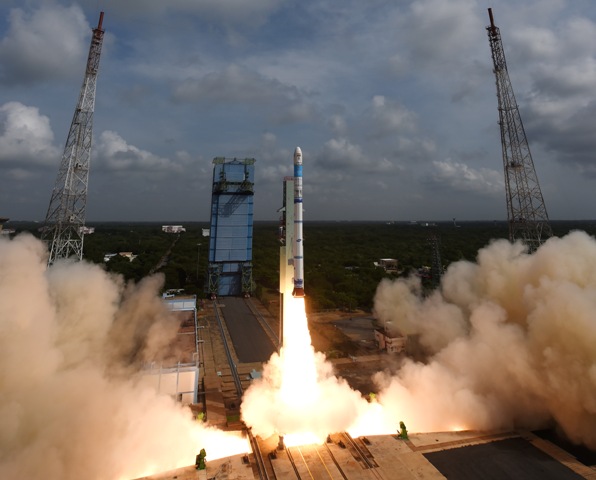Today, at 9:17 AM, the Indian Space Research Organisation (ISRO) successfully launched the Earth Observation Satellite EOS-08 aboard the Small Satellite Launch Vehicle (SSLV)-D3 from the Satish Dhawan Space Centre in Shriharikota. The mission marks a significant advancement in satellite technology, with EOS-08 featuring several novel innovations designed for future operational satellites.
EOS-08 is built on the Microsat/IMS-1 bus and carries three key payloads: the Electro Optical Infrared Payload (EOIR), the Global Navigation Satellite System-Reflectometry payload (GNSS-R), and a SiC UV Dosimeter. The EOIR payload is designed to capture images in both the Mid-Wave and Long-Wave IR bands, enabling day and night satellite-based surveillance, environmental monitoring, and disaster detection, including fires and volcanic activity.
The GNSS-R payload demonstrates cutting-edge remote sensing applications, such as ocean surface wind analysis, soil moisture assessment, and flood detection. The SiC UV Dosimeter, intended for the Gaganyaan Mission, will monitor UV irradiance and serve as a gamma radiation high-dose alarm sensor.
Weighing approximately 175.5 kg and generating 420 W of power, the EOS-08 satellite will operate in a Circular Low Earth Orbit at an altitude of 475 km with a 37.4° inclination. The satellite is expected to have a mission life of one year.
The satellite's innovative design features include an Integrated Avionics system known as the Communication, Baseband, Storage, and Positioning (CBSP) Package, which combines multiple functions into a single unit with cold redundant systems. The satellite also boasts a miniaturized phased array antenna and a flexible solar panel that enhances power generation and structural integrity. Additionally, a pyrolytic graphite sheet diffuser plate with high thermal conductivity has been integrated to reduce mass.
The EOS-08 mission also incorporates novel X-band data transmission techniques and a battery management system utilizing SSTCR-based charging. Other key technological advancements include a Nano-Star Sensor for microsat applications, reaction wheel isolators to reduce vibrations, and innovative thermal management materials such as Kintex FPGA and STAMET (Si-Al Alloy) Black Kapton.
The successful launch of EOS-08 underscores ISRO's commitment to advancing satellite technology and enhancing India's capabilities in Earth observation and remote sensing.











